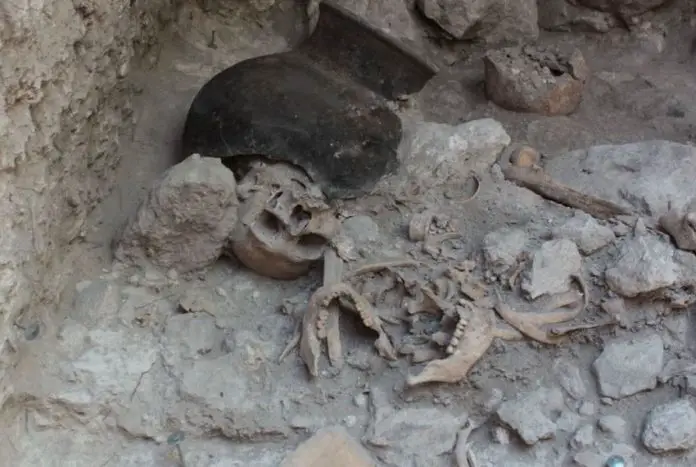One of the best-preserved sets of human remains in the Maya world will be on exhibit at the Baluarte de Nuestra Señora de la Soledad Museum of Maya Architecture in Campeche, starting Thursday.
The exhibition, named The Group Burials of Uxul and the Phenomenon of Ritual Violence, is made up of human and animal remains that were discovered at the bottom of a cave in 2013 by archaeologist Nicolaus Seefeld.
En “El entierro múltiple de Uxul” se exponen objetos únicos que muestran cómo los mayas del Clásico practicaron varias formas de violencia ritual.
¡Visita la exposición en el Museo de Arquitectura Maya Baluarte de la Soledad!🗓️ Martes a domingo, 8 a 17 h#EntradaLibre#Campeche pic.twitter.com/YoJy3HOJUe
— INAH (@INAHmx) July 3, 2024
The National Institute of Anthropology and History (INAH) said that the findings, which are in an “exceptional state of conservation,” have allowed researchers to reconstruct a form of violence associated with the taking of war prisoners in the pre-Columbian era. The remains have also enabled the analysis of bone elements and organic tissues that “are rarely preserved in the Maya area,” according to the INAH.
In collaboration with restorer Leticia Jiménez and specialists from the conservation area of the INAH’s offices in Campeche, Seefeld carried out a conservation project that kept the traces of physical violence to which the prisoners were subjected intact.
According to the INAH, researchers believe that the people lying in the underground cavity had probably been killed, dismembered and deposited there sometime during the 7th century AD. The skeletons were not found in a natural anatomical position; legs and arms were severed and almost all of the skulls scattered around the area had been separated from their torsos.
Osteological analysis identified trauma and cut marks on all body parts, which reappear on every skeleton and in the same anatomical area. These findings suggest that the prisoners were dismembered and defleshed systematically and during a single event.

Most of the human remains were also exposed to an indirect heat source having a temperature of approximately 200° C, likely to avoid complete calcination of the bones. The animals’ remains were not dismembered nor exposed to heat, but some show signs of having been prepared as food.
A further study carried out by Seefeld, funded by the Gerda Henkel Foundation, revealed that the remains belonged to at least 14 men, one woman, several adolescents, an 18-month-old infant and a newborn.
Researchers believe the remains were deposited without any accompanying offerings at the bottom of the cavity and covered with a rough layer of gravel, which was sealed with a layer of mud. The burial cave had shown no subsequent alterations until its discovery.
The layer of mud, which protected the remains from adverse climatological conditions, allowed the findings to stay in an almost perfect state of conservation.
Additional isotopic studies on dental enamel samples revealed that most of the remains were of individuals from a region located 150 kilometers southeast of Uxul, Campeche, in the area of Usumacinta, Chiapas.
Mexico News Daily
